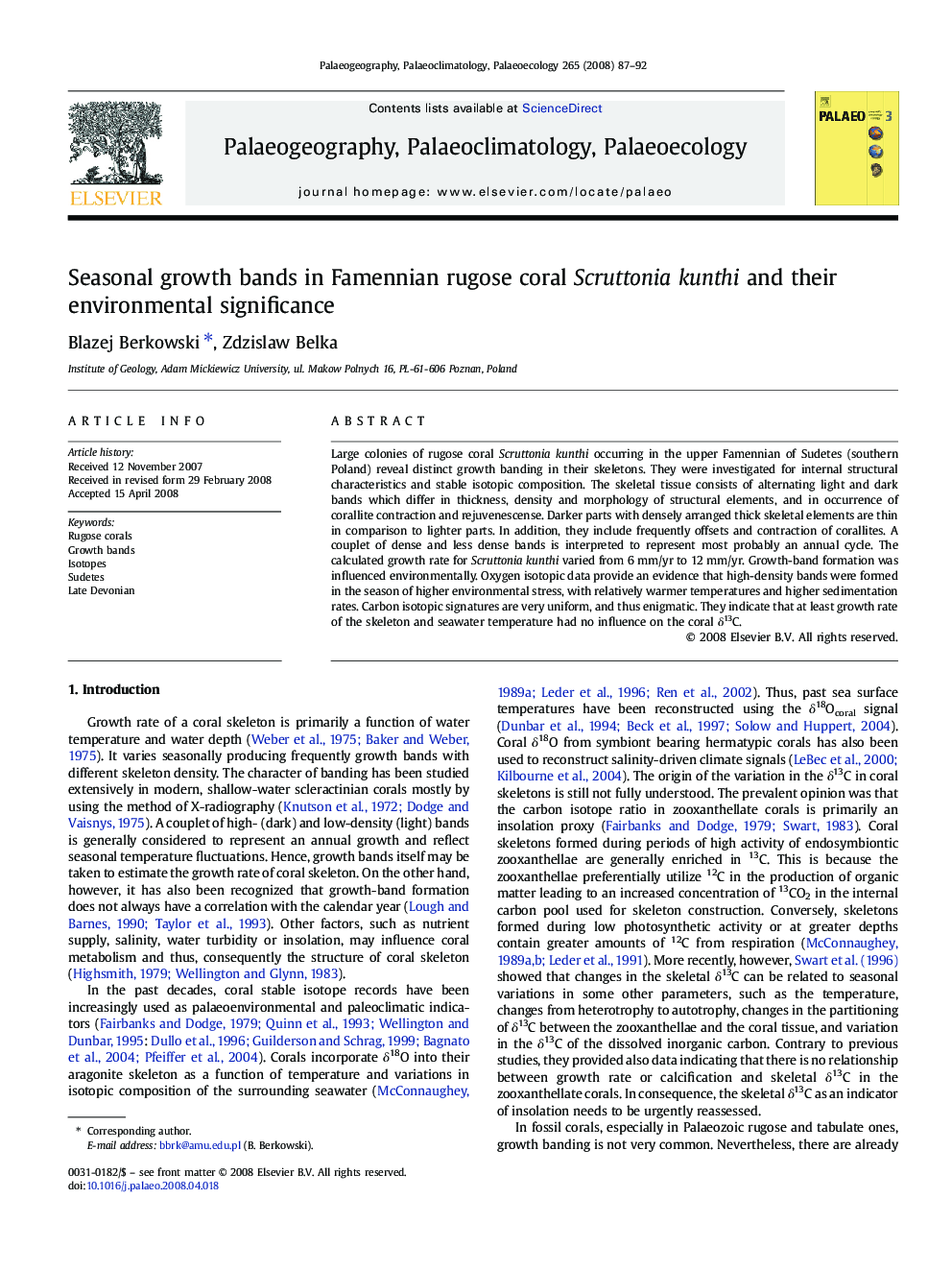| Article ID | Journal | Published Year | Pages | File Type |
|---|---|---|---|---|
| 4468544 | Palaeogeography, Palaeoclimatology, Palaeoecology | 2008 | 6 Pages |
Large colonies of rugose coral Scruttonia kunthi occurring in the upper Famennian of Sudetes (southern Poland) reveal distinct growth banding in their skeletons. They were investigated for internal structural characteristics and stable isotopic composition. The skeletal tissue consists of alternating light and dark bands which differ in thickness, density and morphology of structural elements, and in occurrence of corallite contraction and rejuvenescense. Darker parts with densely arranged thick skeletal elements are thin in comparison to lighter parts. In addition, they include frequently offsets and contraction of corallites. A couplet of dense and less dense bands is interpreted to represent most probably an annual cycle. The calculated growth rate for Scruttonia kunthi varied from 6 mm/yr to 12 mm/yr. Growth-band formation was influenced environmentally. Oxygen isotopic data provide an evidence that high-density bands were formed in the season of higher environmental stress, with relatively warmer temperatures and higher sedimentation rates. Carbon isotopic signatures are very uniform, and thus enigmatic. They indicate that at least growth rate of the skeleton and seawater temperature had no influence on the coral δ13C.
